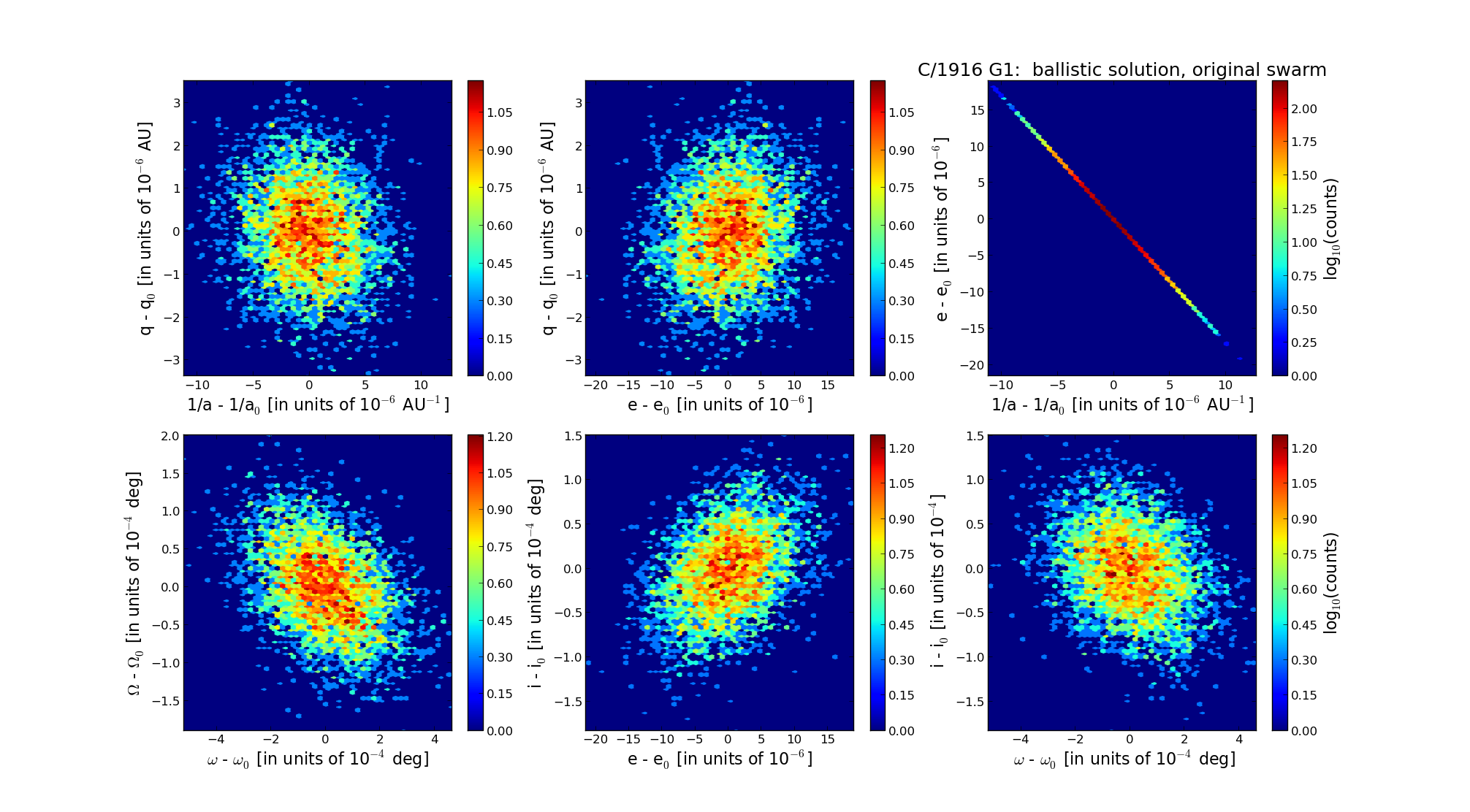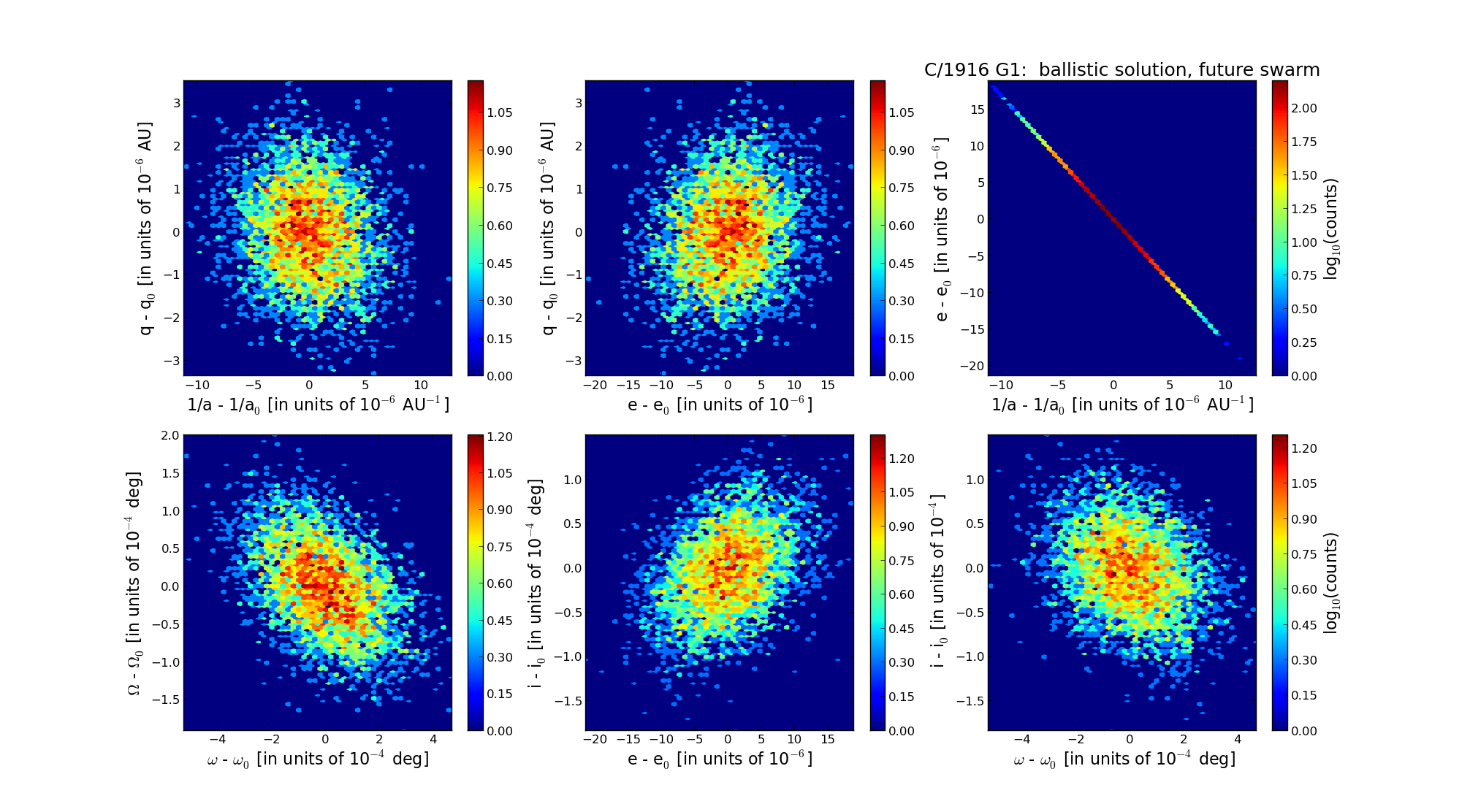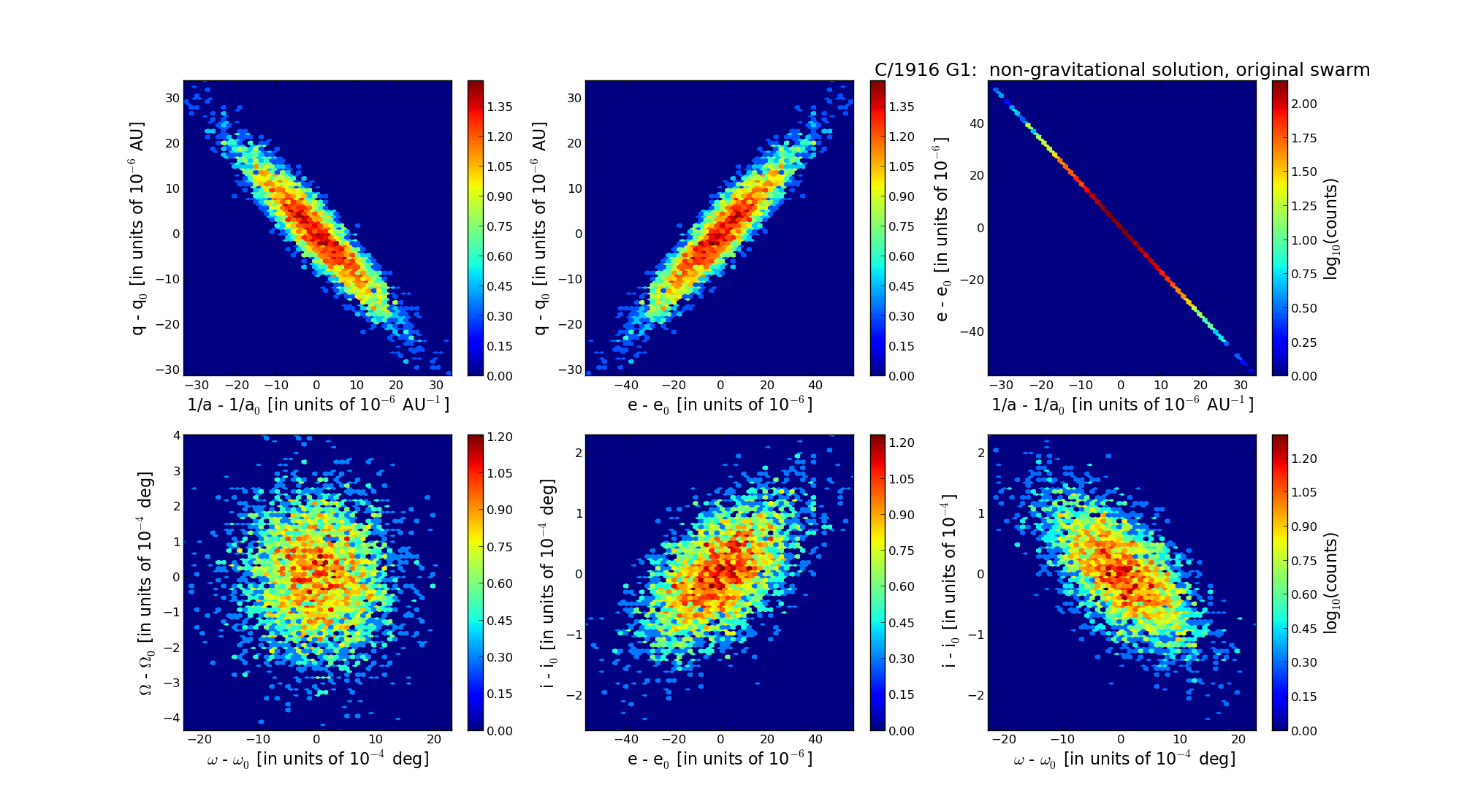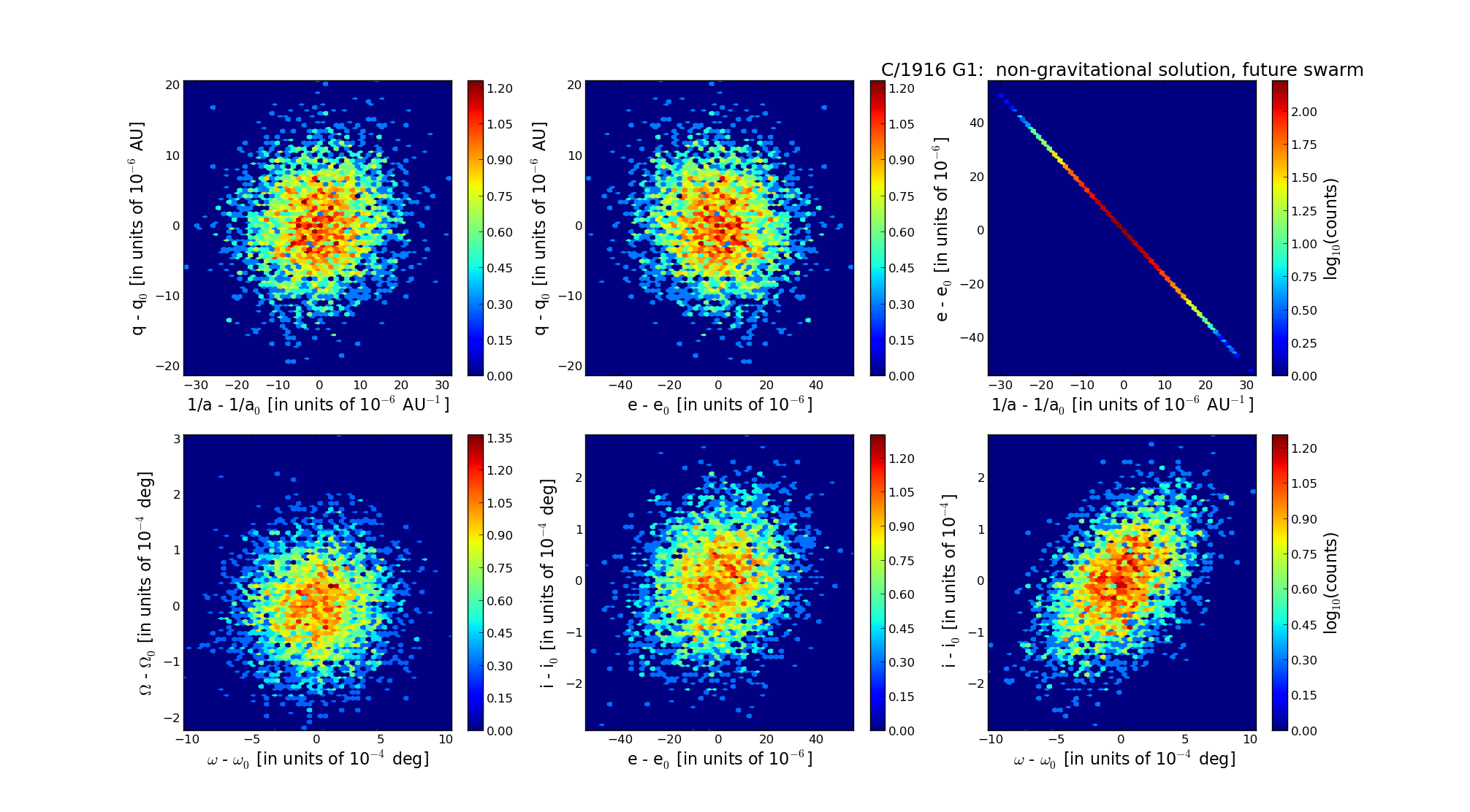| Solar System Dynamics & Planetology Group |
 |
C/1916 G1 Wolf |  |
| Solar System Dynamics & Planetology Group |
 |
C/1916 G1 Wolf |  |
| number of observations | 471 |
| number of residuals | 823 |
| data interval | 1916 Apr. 7 — 1918 Nov. 1 |
| rms [arcsec] | 1.97 |
| orbit quality class | 1a |
| Epoch (TT) | 19170621.0 | = JD 2421400.5 |
| time of perihelion passage (TT) | 19170617.074175 | ± 0.000244 |
| perihelion distance | 1.68644587 | ± 0.00000103 |
| eccentricity | 0.99937443 | ± 0.00000541 |
| argument of perihelion [deg] | 120.621838 | ± 0.000141 |
| longitude of the ascending node [deg] | 184.457271 | ± 0.000054 |
| inclination [deg] | 25.659093 | ± 0.000045 |
| inverse semimajor axis [10-6 au-1] | 370.94 | ± 3.21 |

| Epoch (TT) | 16170921 | |
| time of perihelion passage (TT) | 19170617.357661 | ± 0.000249 |
| perihelion distance | 1.69219889 | ± 0.00000105 |
| eccentricity | 0.99994022 | ± 0.00000541 |
| argument of perihelion [deg] | 120.502725 | ± 0.000140 |
| longitude of the ascending node [deg] | 184.485105 | ± 0.000054 |
| inclination [deg] | 25.605811 | ± 0.000045 |
| inverse semimajor axis [10-6 au-1] | 35.33 | ± 3.20 |

| Epoch (TT) | 22260313 | |
| time of perihelion passage (TT) | 19170618.004132 | ± 0.000249 |
| perihelion distance | 1.68486080 | ± 0.00000104 |
| eccentricity | 0.99868344 | ± 0.00000539 |
| argument of perihelion [deg] | 120.734220 | ± 0.000142 |
| longitude of the ascending node [deg] | 184.255647 | ± 0.000054 |
| inclination [deg] | 25.636610 | ± 0.000045 |
| inverse semimajor axis [10-6 au-1] | 781.41 | ± 3.20 |
| number of observations | 471 |
| number of residuals | 817 |
| data interval | 1916 Apr. 7 — 1918 Nov. 1 |
| rms [arcsec] | 1.84 |
| orbit quality class | 1b |
| Epoch (TT) | 19170621.0 | = JD 2421400.5 |
| time of perihelion passage (TT) | 19170617.074377 | ± 0.000274 |
| perihelion distance | 1.68642132 | ± 0.00000382 |
| eccentricity | 0.99932117 | ± 0.00000954 |
| argument of perihelion [deg] | 120.621627 | ± 0.000182 |
| longitude of the ascending node [deg] | 184.457166 | ± 0.000054 |
| inclination [deg] | 25.658821 | ± 0.000063 |
| inverse semimajor axis [10-6 au-1] | 402.53 | ± 5.66 |
| Nongravitational parameters [10-8 au/day2] | A1 = 2.502 ± 0.442 | A2 = 0.708 ± 0.363 | A3 = -0.2692 ± 0.0699 |

| Epoch (TT) | 16170414 | |
| time of perihelion passage (TT) | 19170617.362353 | ± 0.001103 |
| perihelion distance | 1.69214922 | ± 0.00000924 |
| eccentricity | 0.99988224 | ± 0.00001603 |
| argument of perihelion [deg] | 120.505372 | ± 0.000640 |
| longitude of the ascending node [deg] | 184.485407 | ± 0.000122 |
| inclination [deg] | 25.605536 | ± 0.000064 |
| inverse semimajor axis [10-6 au-1] | 69.59 | ± 9.48 |

| Epoch (TT) | 22260313 | |
| time of perihelion passage (TT) | 19170618.002781 | ± 0.000285 |
| perihelion distance | 1.68482103 | ± 0.00000571 |
| eccentricity | 0.99867953 | ± 0.00001482 |
| argument of perihelion [deg] | 120.732445 | ± 0.000275 |
| longitude of the ascending node [deg] | 184.255375 | ± 0.000066 |
| inclination [deg] | 25.636480 | ± 0.000079 |
| inverse semimajor axis [10-6 au-1] | 783.75 | ± 8.79 |